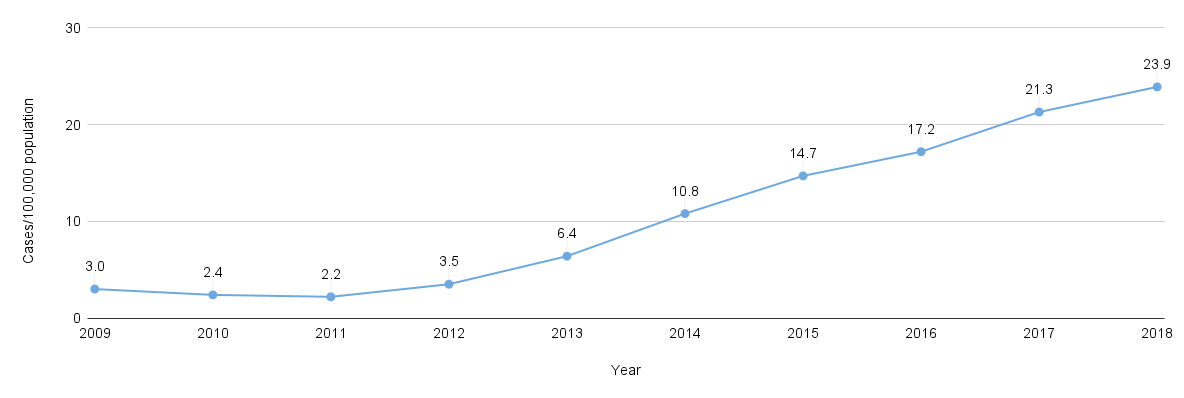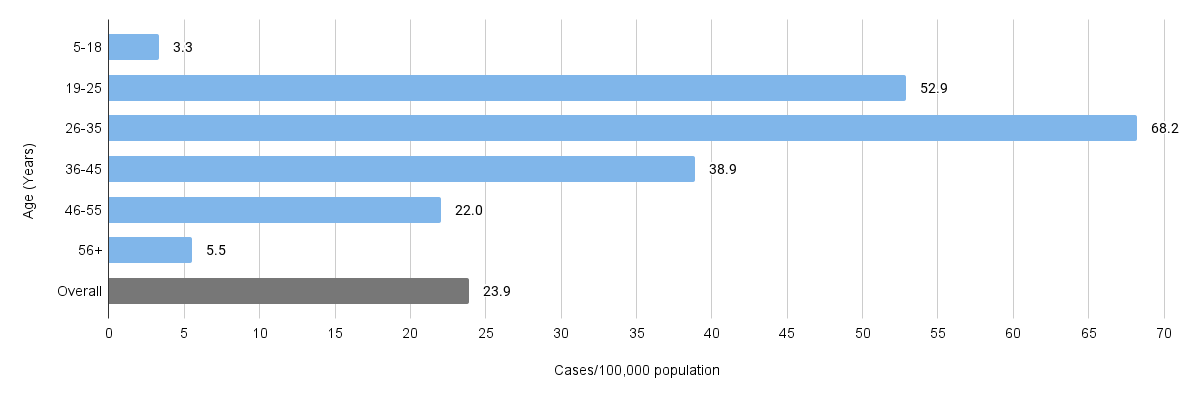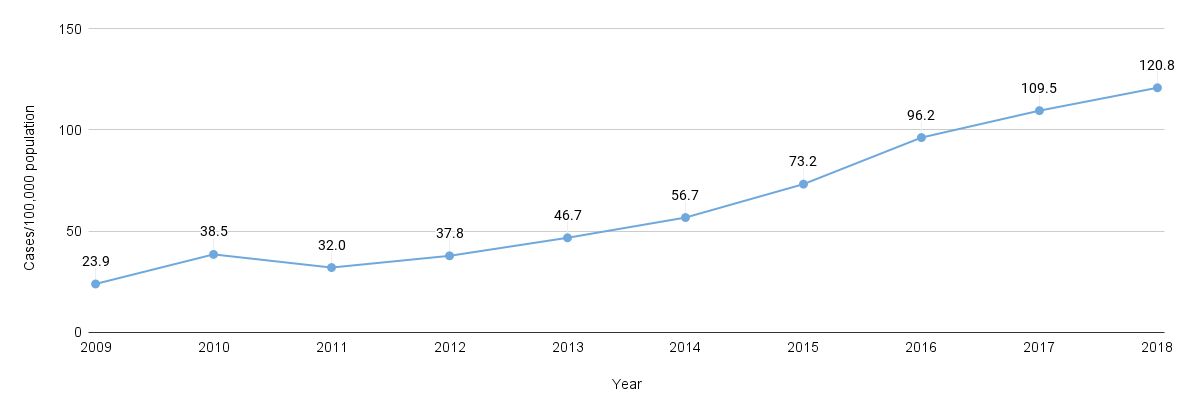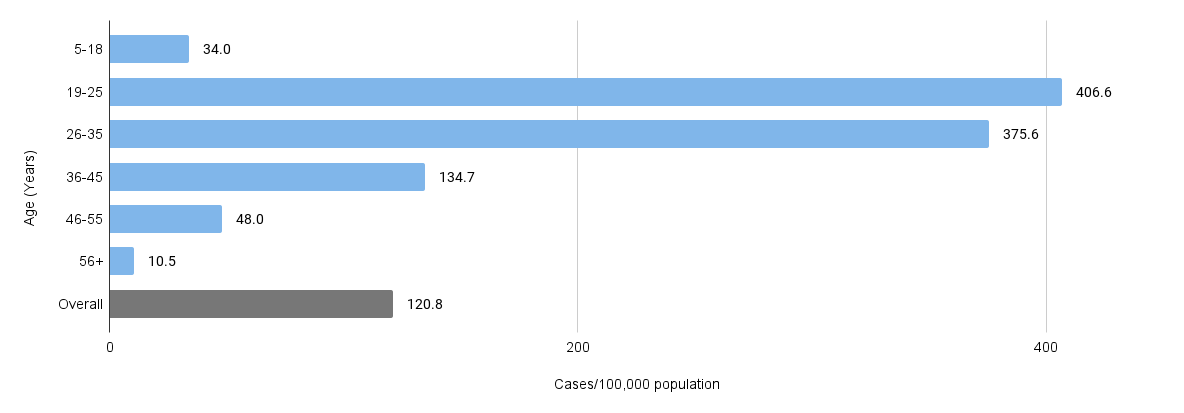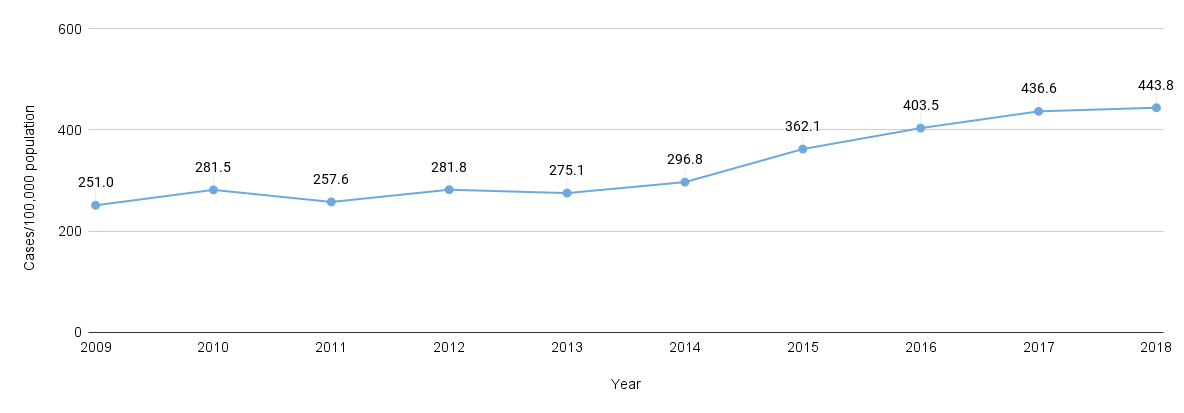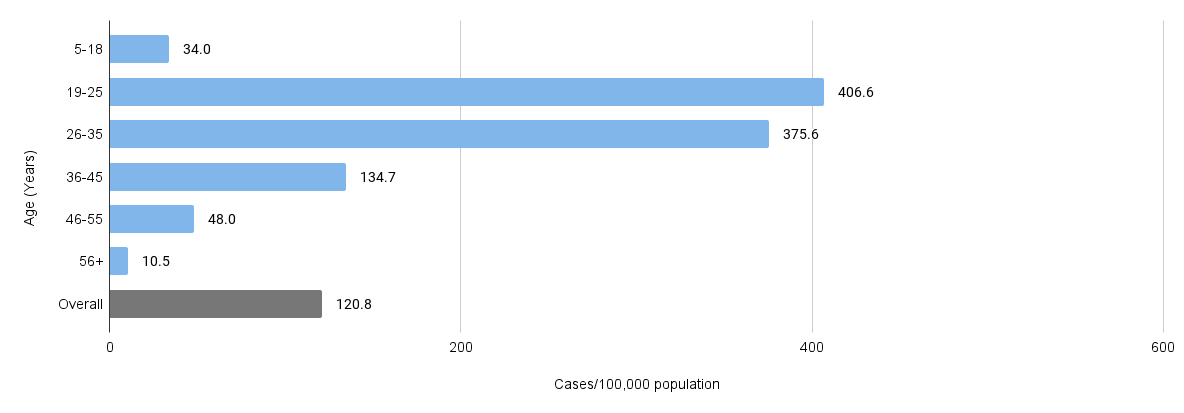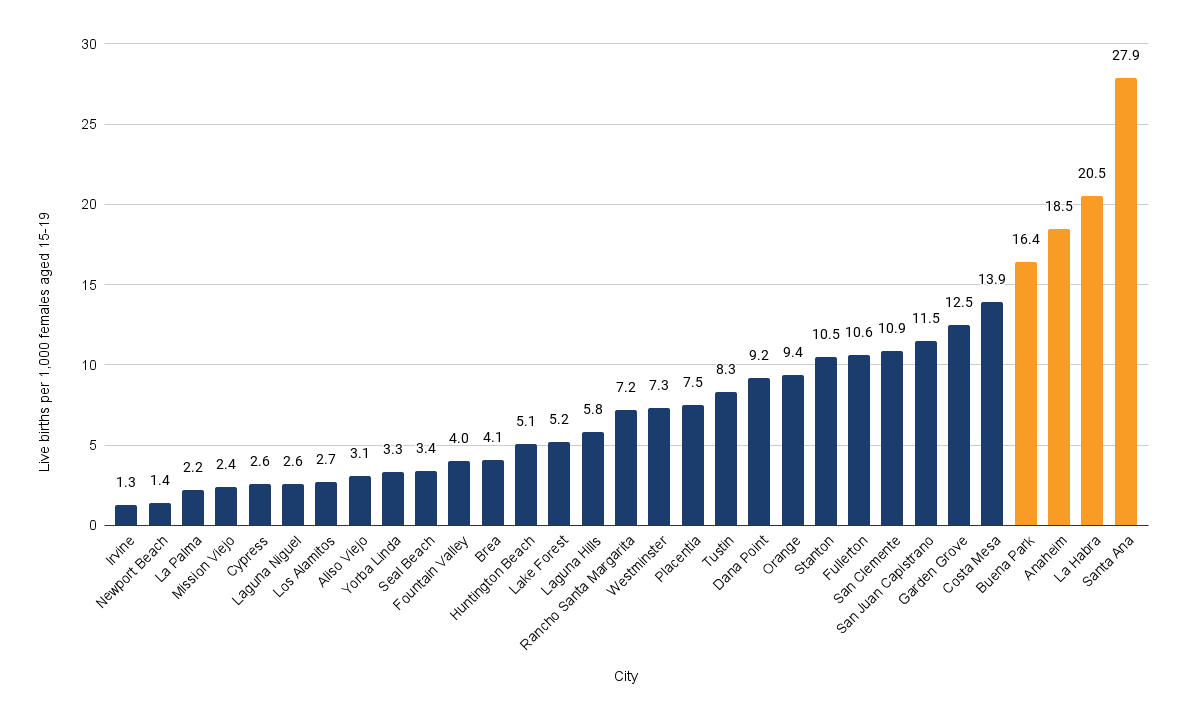Untreated sexually transmitted infections (STIs) can lead to serious long-term health consequences, including infertility. STIs are acquired during unprotected sex with an infected partner. Social, economic, and behavioral factors can affect the spread of STIs. These factors may cause serious obstacles to STI prevention because of their influence on social and sexual networks, access to care, willingness to seek care, and social norms regarding sex and sexuality.

Sexual Health
Orange County's syphilis, gonorrhea, and chlamydia cases are at the highest levels in 30 years and continue to increase. Disparities in teen pregnancy and sexually transmitted infections (STIs) also have significant implications for certain communities in Orange County.
What are the sexually transmitted infection rates in our community?
Syphilis Incidence Rate
Why is this important?
Syphilis is a sexually transmitted infection (STI) caused by a bacterium called Treponema pallidum.
According to the CDC, after reaching an all time low in 2000, cases of primary and secondary (infectious) syphilis are on the rise in the United States, particularly among men having sex with men. New cases of primary and secondary syphilis in men having sex with men are often characterized by co-infection with HIV. In addition, syphilis can also be passed from mother to infant during pregnancy causing a disease called congenital syphilis. Pregnant women with untreated early syphilis experience perinatal death in up to 40% of cases.
In Orange County, syphilis has been rising among men having sex with men in recent years, but the number of women acquiring syphilis in Orange County is now increasing. Some of the challenges include, women who are most at risk can be hard to locate as they can be disproportionately homeless and less likely to have access to prenatal care. Another factor is substance use, which might be linked to multiple sexual partners. For example, in Orange County, nearly half of mothers giving birth to infants with congenital syphilis from 2017 to 2021 used methamphetamine, or their partners did.
Nationwide, there were 133,945 reported new diagnoses of syphilis (all stages) in 2020. Of those cases, 41,655 were primary and secondary syphilis with the majority occurring among gay, bisexual, and other men who have sex with men. According to CDC, these groups are more at risk due to social stigma and mental health issues playing a role in risky sexual behavior and a reluctance to seek medical assistance.
-
Syphilis Incidence Rate per 100,000 Population
16.8Orange County, CA
-
20.6
California
-
11.9
United States of America
Syphilis Incidence Rate (measurement period: 2009-2018)
Orange County
Syphilis Incidence Rate by Age (2018)
Orange County
Gonorrhea Incidence Rate
Why is this important?
Gonorrhea is a sexually transmitted infection (STI) caused by Neisseria gonorrhoeae. It is typically asymptomatic, but easy to treat. However, gonorrhea has developed resistance to antibiotics over the years, complicating treatment. Left untreated, gonorrhea can cause serious and permanent health problems in both women and men. In women, gonorrhea is a common cause of pelvic inflammatory disease. In the United States, the highest reported rates of infection are among sexually active teenagers, young adults, and African Americans.
-
Gonorrhea Incidence Rate per 100,000 Population
126.4Orange County
-
201.7
California
-
179.1
The United States of America
Gonorrhea Incidence Rate (measurement period: 2009-2018)
Orange County
Gonorrhea Incidence Rate by Age (2018)
Orange County
Chlamydia Incidence Rate
Why is this important?
Chlamydia, one of the most frequently reported bacterial sexually transmitted infections (STIs) in the United States, is caused by the bacterium, Chlamydia trachomatis. Although symptoms of chlamydia are usually mild or absent, serious complications that cause irreversible damage, including infertility, can occur "silently" before a woman ever recognizes an infection. Chlamydia can also be transmitted via discharge from the penis of an infected man. Under-reporting of chlamydia is substantial because most people with chlamydia are not aware of their infections and do not seek testing.
-
Chlamydia Incidence Rate per 100,000 Population
442.7Orange County
-
594.7
California
-
481.3
The United States of America
Chlamydia Incidence Rate (measurement period: 2009- 2018)
Orange County
Chlamydia Incidence Rate by Age (2018)
Orange County
Teen Birth Rate: 15-19
Why is this important?
Teen birth is of concern for the health outcomes of both the mother and the child. Pregnancy and delivery can be harmful to teenagers' health, as well as social and educational development. Babies born to teen mothers are more likely to be born preterm and/or low birth weight. Responsible sexual behavior reduces unintended pregnancies, thus, reducing the number of births to adolescent females.
-
Teen Birth Rate: 15-19 (Live Births/1,000 Females)
27.9%Santa Ana City
-
9.9%
Orange County
-
15.1%
California
-
17.4%
The United States of America
